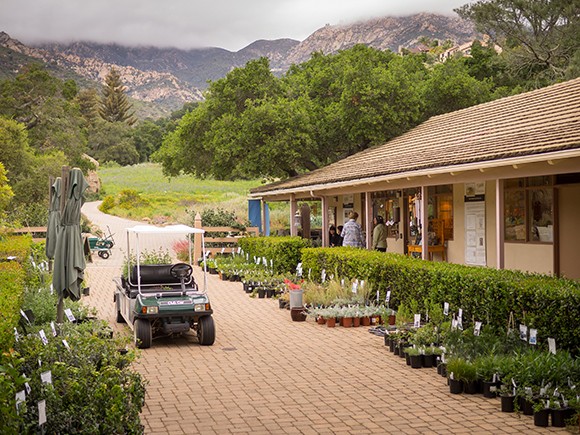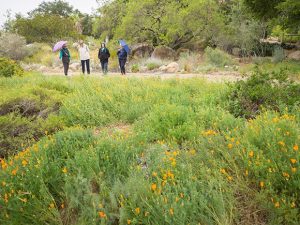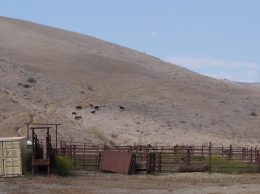
The Garden Growers Nursery, adjacent to the Santa Barbara Botanic Gardens, sells drought-resistant native plants. (Nik Blaskovich / Business Times photo)
In the nursery business, a drought usually means a dry spell at the cash register. Customers are wary of planting much of anything, and keeping the nursery’s stock healthy becomes more of a burden.
But for the growing segment of the market that specializes in native plants, this drought is an opportunity. Jeff Nighman, a co-owner of Santa Barbara Natives, said this is “a boom time” for his nursery on the Gaviota coast, which carries only genetically local native plants.
Even traditional nurseries, which tend to suffer during droughts, are expanding their native and drought-tolerant offerings, he said.
“A lot of nurseries are increasing their native production, or their agave, cactus, Mediterranean, whatever they have,” Nighman said. “They all see the writing on the wall.”
That writing says, “use less water,” with Gov. Jerry Brown recently telling cities and water providers to cut urban use by 25 percent. Outdoor landscaping is the biggest variable in residential water use, the main reason the average Montecito resident uses more than twice as much water per day as the average Santa Barbara resident, according to data from the State Water Resources Control Board.
In the Santa Barbara area, nurseries, landscape architects, developers and homeowners have an ally in drought-fighting in the Santa Barbara Botanic Garden. The nonprofit has its own retail nursery, and it also works closely with Santa Barbara Natives and other nurseries to propagate and grow native plants such as manzanitas, sage, milkweed and wild lilac.

Manager of the volunteer program at the Santa Barbara Botanic Gardens Kathy Cataneda, right, guides a group tour through a meadow of drought-tolerant native wildflowers. (Nik Blaskovich / Business Times photo)
“The Botanic Garden has as its mission to conserve and promulgate native Californian plants, most of which are very drought-tough, very well adapted to the climate in Southern California,” said Bruce Reed, the Botanic Garden’s horticulturalist. “They’re able to take the summer droughts, and even longer droughts that last years.”
The Botanic Garden has two nurseries: one that grows plants for the garden itself and one that sells them to the public. Revenues at the retail nursery are about $100,000 a year and have “expanded a good deal” since the drought started, Reed said. The nursery is in the middle of its spring sale, which ends the first weekend in May, and there is a larger sale planned for the fall, said Paige Minney, the nursery’s manager.
The retail nursery is usually a break-even operation, Reed said.
“We do it to meet our mission, which is to try and get more plants out in people’s yards to support our wildlife and bring back some of the habitat the landscape used to provide,” he said. “One of the things we’re up against more than anything is a lack of knowledge on the part of the public. Even landscape architects don’t know these plants very well and need information on how to raise them.”
The Botanic Garden also offers classes in garden planning for both professionals and hobbyists. The garden’s experts and their counterparts in the private sector have a collaborative relationship, Reed said. Sometimes commercial nurseries will sell plants to the Botanic Garden, and sometimes they’ll buy from the garden. “Mostly, it’s just sharing information,” Reed said.
Nurseries like Santa Barbara Natives get most of their business from large mitigation projects, in which a landowner wants to restore a property to its natural state. That might be a developer with a court-ordered pollution settlement, or a government agency that wants to switch from concrete channels to more natural means of flood control.
It’s only in the past couple of bone-dry years that landscapers and homeowners have started buying Santa Barbara Natives’ plants in any significant numbers. The nursery is open to the general public by appointment only.
“We don’t do any publicity, but we’re busy as all get-out,” Nighman said.






 Print
Print Email
Email

















